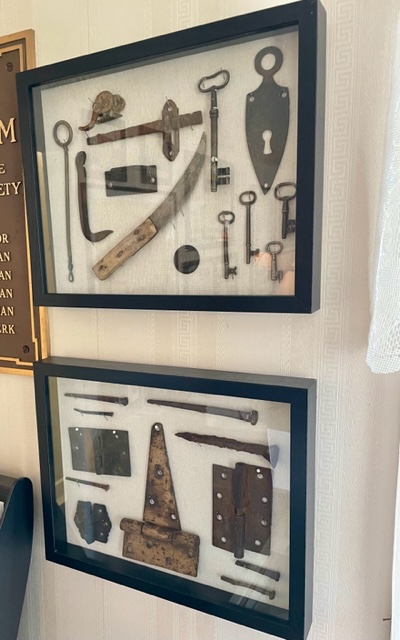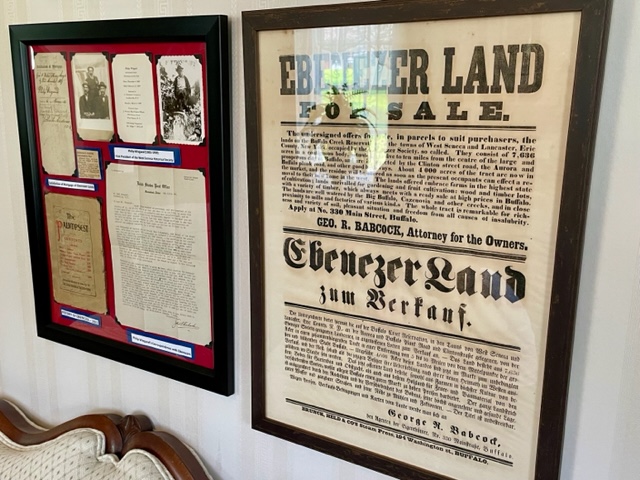Originally German Lutherans, the Ebenezer’s were taken from their home and were brought to the United Stated by their spiritual elder, Elder Christian Metz. In November 1842, the Ebenezer Society bought 5,000 acres at ten dollars an acre, and became owners of the Buffalo Creek Reservation. The Native Americans continued to trade and harvest lumber on this land however, and did so long after the land ‘belonged’ to the settlers legally, as it was still a reservation.
The Ebenezers were excellent farmers and skilled craftsmen, and lived in a communal village setting that was different from the usual pioneer setting that included a farmhouse on the land they owned. Their homes were owned by the Ebenezer Society and were often shared by more than one family, and the families were usually assigned by the elders in the society. The houses consisted of a series of bedrooms and communal living rooms and kitchens, and families cooked together. Men, women, and children often sat at separate tables when eating. Jobs were distributed throughout the community in order to support everyone and for the general well- being of each family and religion was very important in their lives and many considered it to be the main reason for their existence. They led simple lives of humility, dignity, self-denial, and brotherly love. The Ebenezers wore plain garb that was very conservative: men wore a beard and mustache while women wore simple skirts, aprons, along with a cap and a dark shawl. Children dressed similarly to their adult counterparts.
The Ebenezers were incorporated into the Town of West Seneca, but urged on to continue looking for land due to internal conflict and encroaching neighbors, ended up selling their land to new German immigrants, and relocating to Amana, Iowa.



Recent Comments